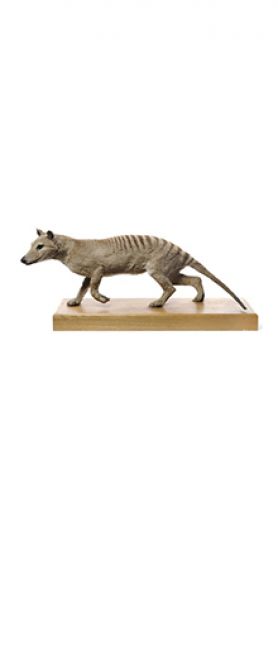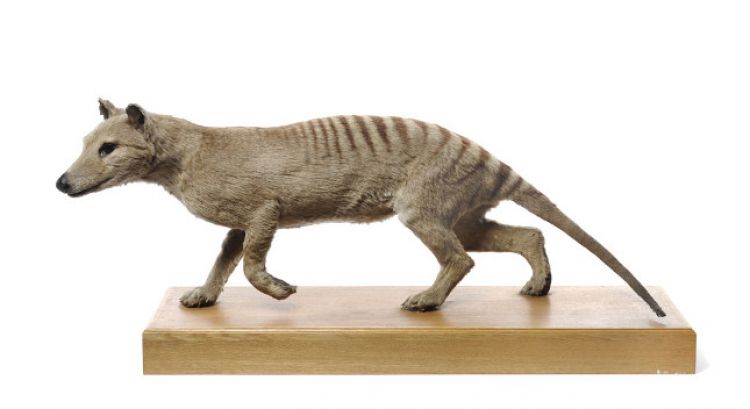Thylacine or Tasmanian tiger (Thylacinus cynocephalus)

Originally abundant throughout Australia, the thylacine's territory was reduced to Tasmania after the arrival of the Aborigines and the introduction of dingoes more than 5,000 years ago. In the 18th century, the arrival of the settlers and their dogs gave it little respite. Accused of threatening their farms, it was the target of intensive hunting, encouraged by bonuses. Recently, researchers have shown that genetic factors may have weakened the population before the arrival of humans on the continent. In 1936, the species officially became extinct when the last individual died in a zoo. But the promoters of the Thylacine project are still in hopes of finding survivors.
Apart from this fine taxidermied specimen, the Museum has also preserved an incomplete skeleton of this unique species. Like the 752 other pieces kept in museums or universities around the world, the Strasbourg specimen is listed in the international database on the marsupial wolf.
